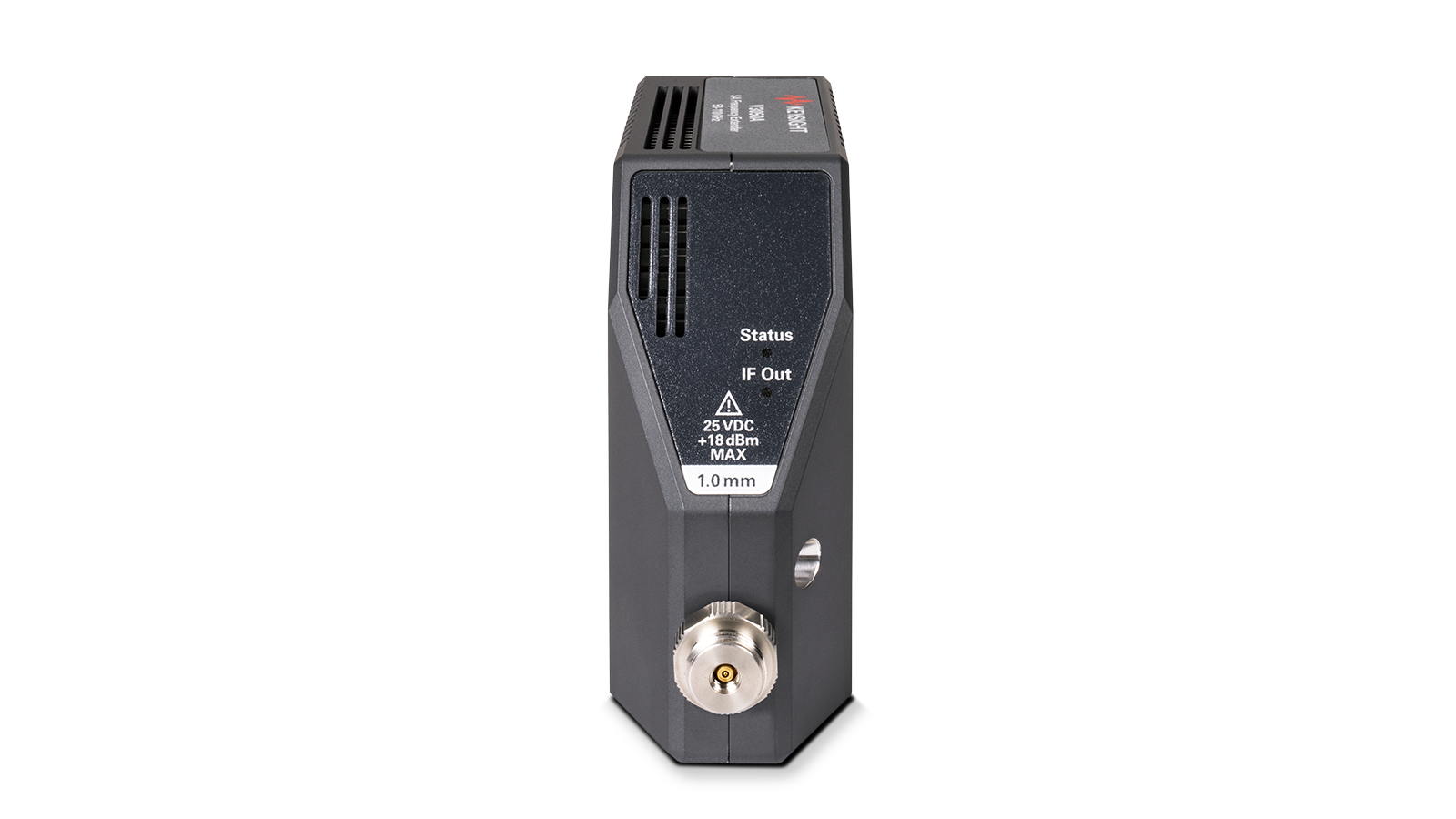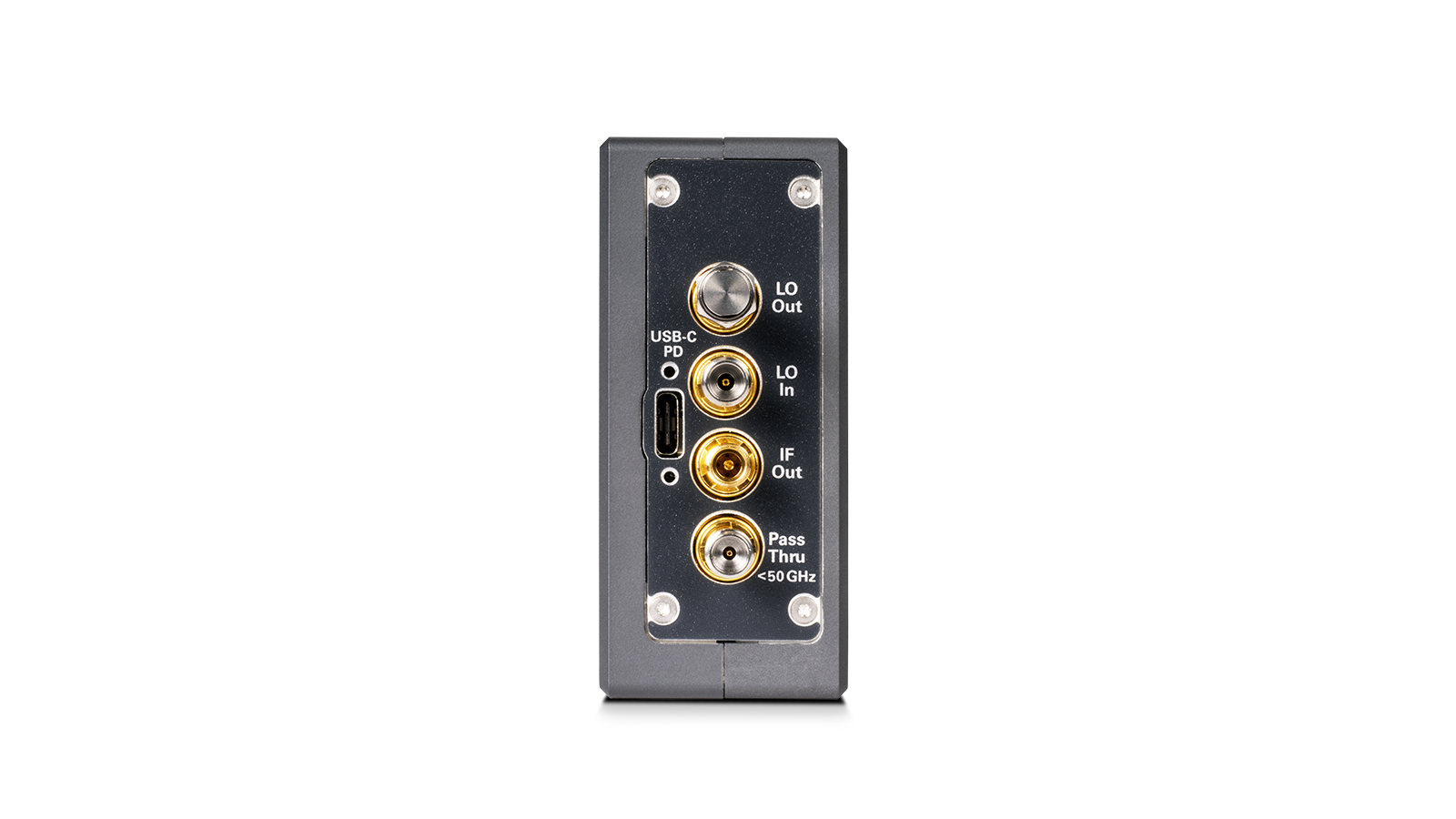Do you need help?
Contact us with any question regarding your used Keysight equipment purchase!

Product selection and configuration assistance
Availabilty, warranty extensions, calibration plans, additional software options, education discounts etc.
Keysight V3050A-F09
Signal Analyzer Frequency Extender / 50 GHz to 87.96-89.5 GHz
Cannot ship to:
European Union
Switzerland
Norway
Turkey
Unit only ships within China.
Unit ships worldwide.
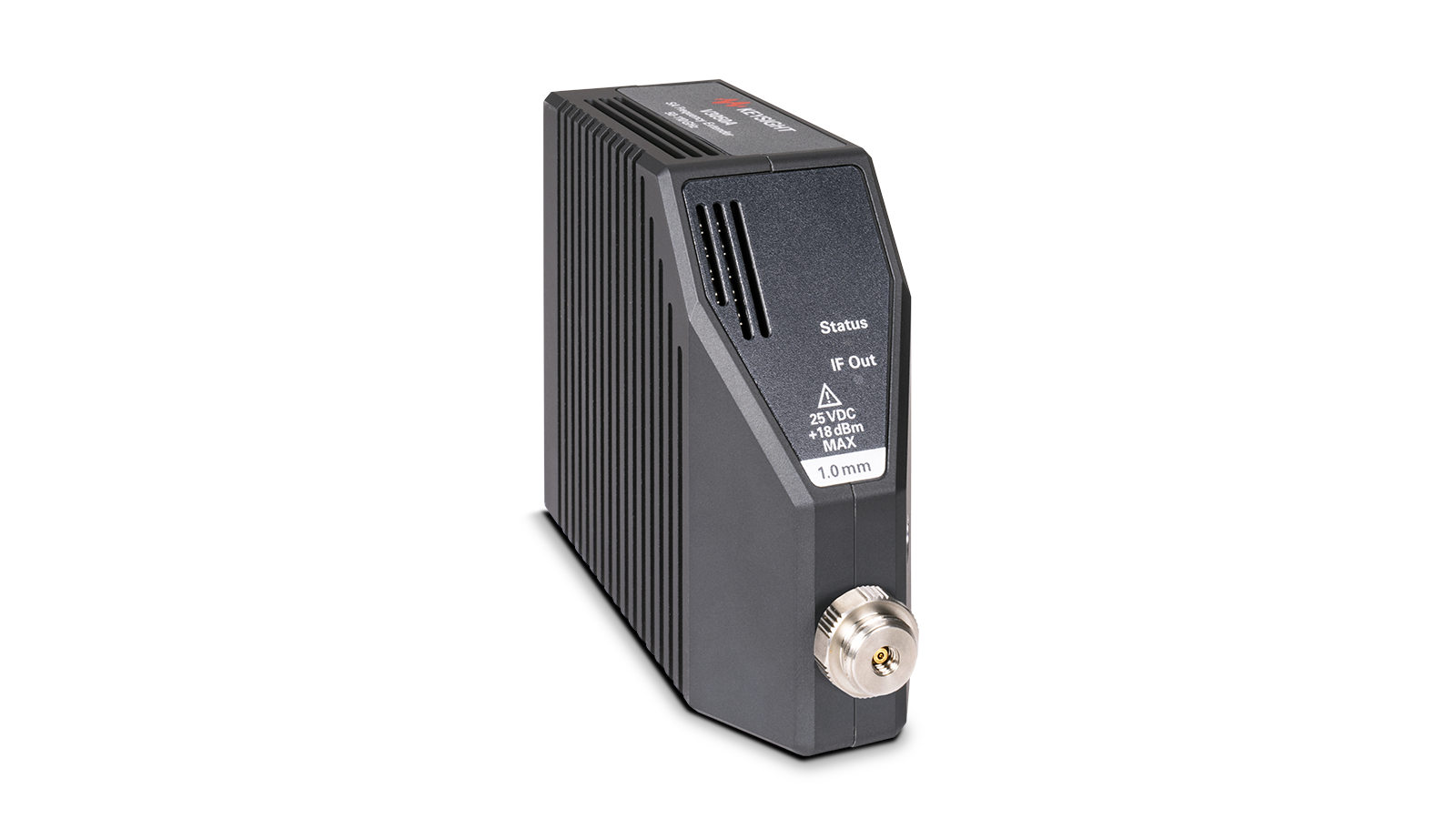
Keysight Premium Used
Keysight V3050A-F09
From
USD 58,838.45 Save 45%
Installed Options
| F09 | Frequency Range, 50 GHz to 90 GHz |
Addable Options
Request a customized version of this model by requesting a Custom Quote
Product Specifications
Extend the Frequency of the N9042B UXA X-Series Signal Analyzer to 110 GHz
The innovative V3050A Signal Analyzer Frequency Extender gives you unmatched measurement accuracy of wideband signals at very high frequencies. It provides:
- Outstanding sensitivity
- Unbanded and preselected frequency coverage up to 110 GHz
- High dynamic range
- Seamless interface to the N9042B UXA signal analyzer
NOTE: Export restrictions apply to frequencies > 90 GHz
Accessories
For Keysight Premium Used listings like-new accessories (e. g. a power cord) are included.
Other accessories that are not listed and included in the offer can be purchased separately at an extra cost with your purchase of a Keysight Used or Keysight Premium Used unit. Please specify in the comment field which additional accessories or support you are interested in.
For separate or post-purchase ordering, please contact your local Keysight office or Keysight Partner here. Or check our online store if available for your region here.
Ready To Get Started?
FAQs
What are the main differences between Keysight New, Keysight Premium Used & Keysight Used equipment?
| Keysight New | Keysight Premium Used | Keysight Used | |
|---|---|---|---|
| Savings | None | Up to 70% | Up to 90% |
| Condition | New | Like New | Working Condition ¹ |
| Firmware | Latest | Updated | As is |
| Calibration | Full | Full | As listed |
| Accessories | New | New | As listed |
| Warranty | 1 to 5 Years ² | Like New | 90 Days Warranty |
| Customization | Possible | Possible | Limited |
Learn more about Keysight Premium Used Here
Can I configure a unit to meet my personal needs?
Customization is generally possible with our Keysight Premium Used equipment. The majority of our Keysight Premium Used equipment can be configured just the way you need it. Options can be added at additional cost.
Customizing Keysight Premium Used equipment might change the delivery and lead time of the item.
Some Keysight Used products cannot be customized. Use the contact option on the product page to check with the our eStore team.
What accessories are included?
Keysight Premium Used equipment typically comes with the same accessories and warranty as new products.
Can you include other accessories?
We currently only offer those accessories which are part of the listing. Other accessories can be purchased separately at extra cost with your purchase of a Keysight Used or Keysight Premium Used unit.
Please mention in the comment field which additional accessories or support you are interested in.
For seperate or post-purchase ordering, please contact your local Keysight office or Keysight Partner here. Or check our online store if available for your region here.
Get Your N9917B FieldFox now. Low price and in stock.
Education
and Non-profit Customers Can Save Extra
Spectrum + Signal Analyzers Quick-Facts
What is a signal analyzer?
A signal analyzer is a device used to test and measure electronic signals. Types of signals can vary, including voltage, current, and radiofrequency. Signal analyzers vary in their capabilities and features, depending on the application. There are many types of signal analyzers, but the most common type is an oscilloscope. Other types include spectrum analyzers, network analyzers, and signal generators.
An oscilloscope is a device used when designing electronic systems that allows a signal to be viewed as a waveform. A spectrum analyzer measures the amplitude and frequency of signals over a specific period of time. A network analyzer analyzes circuits without having access to their design details; this can be helpful when there is a delay between creating a circuit and testing it. A signal generator generates signals which are then used by other devices.
There are many uses for a signal analyzer, depending on the type of device and features available. Some standard capabilities include:
Generating and analyzing signals
Magnifying and analyzing large signals
Displaying waveforms of varying types
Displaying the full frequency range of a signal, including visual representations of different frequencies and noise levels
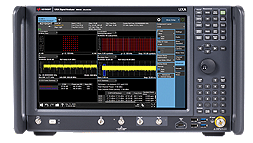
Vector Signal Analyzer vs Spectrum Analyzer – What's the difference?
A signal analyzer analyzes signals that have already been generated, whereas a spectrum analyzer is used to discover frequencies or actually generate frequencies itself.
A spectrum analyzer performs real-time spectrum analysis and measures instantaneous power or peak power, voltage, or current, depending on the type of signal being analyzed. It is also often used to monitor electromagnetic interference in circuits and devices.
On the other hand, a signal analyzer can only measure signals that are already present; it cannot be used to discover or analyze frequencies. Its purpose is to help the user identify electronic circuit problems and understand how the circuit is performing.
Signal Analyzer vs Oscilloscope – What's the difference?
The main difference between a signal analyzer and an oscilloscope is that a signal analyzer analyzes the voltage of a signal over a specific period of time. In contrast, an oscilloscope extracts the timing information of a signal.
An oscilloscope is a type of signal analyzer used to measure voltage signals over time. It has various features, including analog and digital functions, advanced triggering capabilities, and connectivity options. It is used to analyze signals from many different sources, such as time-domain signals, frequencies from radiofrequencies, or extremely low-frequency sources.
A signal analyzer is used to analyze signals that have already been generated. A signal analyzer is often used to monitor electromagnetic interference in circuits and devices, whereas an oscilloscope can only measure signals that are already present.
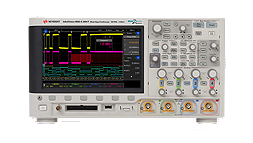
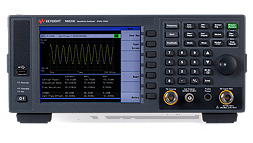
Figure. 2 Oscilloscope vs. Signal Analyzer
Read our oscilloscope basics guide to learn more about oscilloscopes and their uses. To see our full range of new and used oscilloscopes, visit our product listing page.
Signal Analyzer vs. Vector Network Analyzer – What's the difference?
A network analyzer is used to test the performance of wired or wireless networks by examining both transmitted and received signals. Unlike a signal analyzer, it performs advanced analysis of both transmitted and received signals. It is different from a signal analyzer because it performs a live, real-time, analysis of signals on the device under test. In contrast, a signal analyzer only analyzes data after the signal has been created.
A network analyzer can also perform analysis and detect problems that prevent a signal from reaching its destination. For example, it can detect issues with cabling, connectors, or faulty equipment. It can also help resolve RF spectrum and Wi-Fi issues, such as interference and signal loss.
A signal analyzer is used by engineers to identify problems in electronic circuits and to understand how a circuit is behaving; for example, monitoring electromagnetic interference between multiple signals or devices. This makes it useful for testing and debugging circuits that use radio signals or other powerful sources of potential interference.
How to measure antenna impedance with a signal analyzer?
An antenna's impedance refers to the way it responds to signals from specific frequencies. If you want to know what sort of wireless signal a device is sending, you should evaluate the antenna's impedance with a spectrum analyzer. The device would help you determine whether or not your antenna is being affected by noise, which can negatively impact performance.
To measure your antenna's impedance, you can attach a spectrum analyzer to the end of the coaxial cable connected to the back of your antenna. The device will then calculate the impedance being transmitted once it goes through your coaxial cable.
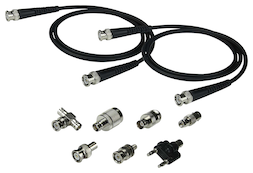
How to measure phase noise with a signal analyzer?
Phase noise is a type of signal that often disrupts or interferes with wireless communication. It is a problem for devices that operate in the wireless frequency spectrum. If phase noise is common across specific frequencies, it can drown out other signals.
There are many different types of phase noise, and each one can affect your wireless technology differently. A signal analyzer measures the phase noise across different frequencies. The device will help you to determine whether your intended wireless communication needs some sort of interference protection.
To measure your device's phase noise with a signal analyzer, you can attach the device to the input of your receiver. This will allow the signal analyzer to calculate how much phase noise is being sent through your wireless communication devices.
How to measure return loss with a signal analyzer?
The return loss is the measurement of how much signal is reflected or wasted at a particular point. It is a measurement of how much energy is being lost in transmission. You can measure return loss with a spectrum analyzer which may enable you to improve the power and efficiency of your wireless connection.
If the return loss is too high, it could indicate power-management issues within your system. A signal analyzer can help you determine whether the return loss is too high, and help you find any hardware issues needing to be resolved. The device can notify you when your power-management settings fall below requirements for successful wireless communication.
To test a device’s return loss with a signal analyzer, plug the spectrum analyzer into the end of a coaxial cable connected to your intended transmitter. The device will determine how much signal is lost after it goes through the cable and exits to reach its intended recipient.
For additional information about how to use your spectrum analyzer to measure return loss, view “Features Resources” for a technical overview of a basic spectrum analyzer as well as an example of how to measure the return loss of an antenna.
